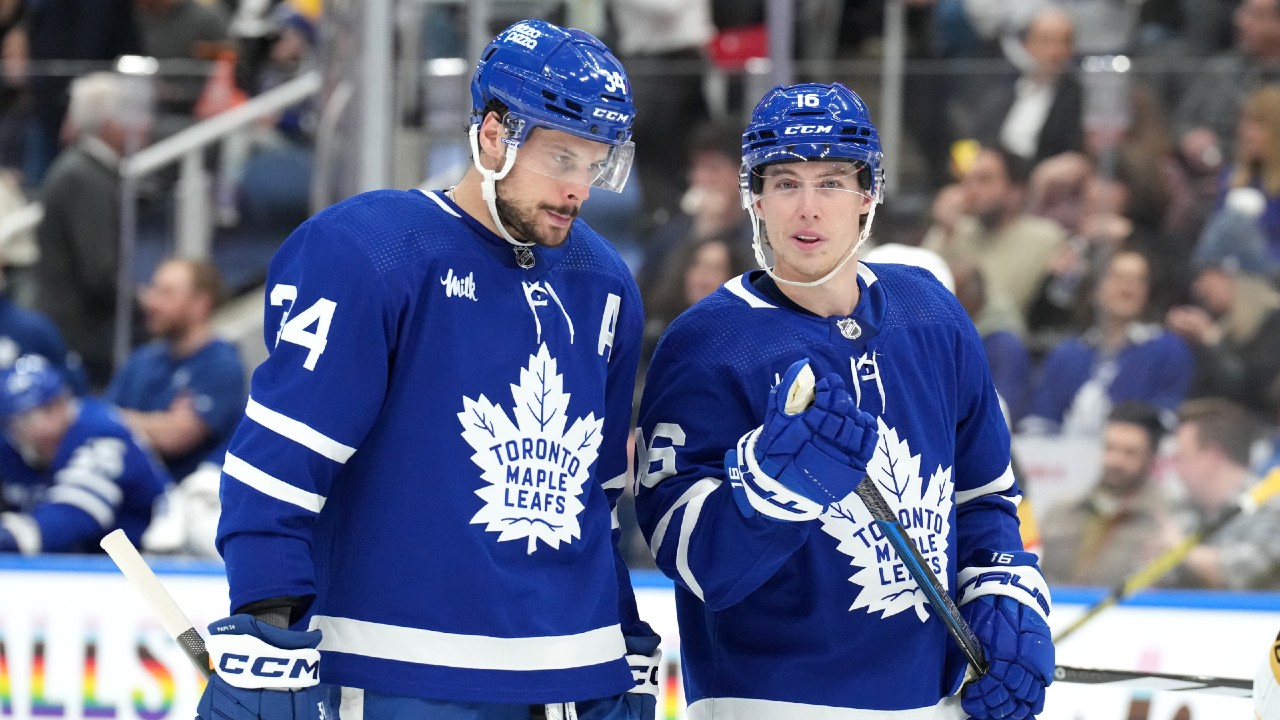
There’s no single reason why the Toronto Maple Leafs have failed to advance towards what’s considered to be their ceiling for seven straight seasons. This extended run of frustration has required a range of blemishes and, like most who follow the team, I’ve come across a variety of diagnoses that have validity.
In the early years it was a lack of playoff toughness. There was also blame on their lack of defensive ability in those early years, which has given way to blaming their lack of offensive conversion in the more recent playoff eliminations. The goalies have taken heat, special teams too, and one coach took a bullet while his successor appears to be en route to the same ending (at least if the fans have their way).
I’ll add two thoughts to the steaming pile of digital ink spilled on this apparently godforsaken franchise, one in passing here, and the other the main focus of the rest of this piece.
The quick note is that athletic pressure builds, compounds, and complicates. There’s always pressure in Toronto, and always pressure when you’re a talented team in the playoffs. But some of those early stumbles — specifically when Toronto’s stars fell short — have exponentially increased the pressure, to the point where after the Leafs earned a split on the road against a favoured playoff opponent in 2024, the local headline was about the lack of points from one of the core players.
When the narrative hole is so deep that marginal success – which is tough to come by in the playoffs – still leaves you in debt by public perception, playing free and mentally clear can’t be easy. That’s not going to get better barring some fresh start.
The second point is the failing of a top-heavy roster construction concept is that you’ll simply never get to see it through to a Stanley Cup Final, barring a miracle. Hockey is brutal, the season is long, and the playoffs are a meat grinder. Banking on getting to put that sort of team build to the test over two months of playoff hockey, when your star players are a target for the opposition, is a fool’s errand. It’s one thing to survive the day-to-day of an 82-game season, it’s quite another to make it through two months of doubly intense hockey afterwards.
While watching the “core four” Leafs put forth a listless showing in a crucial Game 4 against their division rivals, I couldn’t help but shake what had some obvious effect on the game’s shape: these guys are not right. It’s possible the outcomes would’ve been the same if they were healthy, but in real-time the effect was clear. And wouldn’t you know it, I’ve had that thought in these moments before. I’ve watched all of the Leafs’ “core four” players since they came into the league, and none of their fans would watch them today and say they’re at peak form, let alone average form.
Whether you think he should battle through it or not, Auston Matthews has in fact been sick, devoid of life for two straight games, and just can’t be the plow horse who pulls the team as he usually does. William Nylander missed three games and had some timing issues in his return. And some have suggested Mitch Marner still isn’t right in the wake of his ankle injury.
All teams deal with injuries at this time of year, so the Leafs aren’t special. But they’re unique in that they rely so heavily on so few that when one of the few is off by only a little bit, the whole plan immediately takes on Titanic-meets-iceberg level damage.
If everything were perfect, the Leafs might be perfect too. Which makes them a delicate butterfly hoping to operate in conditions where beetles thrive.
In the most glaring example of this – the blown 3-1 series lead to the Canadiens in 2021 – they lost their captain John Tavares in Game 1. You’ll recall he was an effective contributor that season, and the Leafs ended up losing twice in overtime en route to losing the series. Surely Tavares would’ve been a net positive player for them in that series by at least a goal, and maybe that would have been the difference. But we’ll never know, not because of bad luck, but because these sorts of things happen in hockey. It’s reckless to count on the prolonged health of just a few people.
Leafs fans have earned the “to hell with nuance” stance they’ve taken since the Leafs went down 3-0 at the end of the second period of Game 4 against Boston. In that regard, I hope this reads not as an excuse but more a slightly altered indictment of the very concept through which the Leafs have been built. I don’t see it being as simple as “they should have invested more on defence,” because I think they’re a very good team as constructed, if you could count on the foundation holding through inclement weather.
But you can’t. The rain always comes.
Maybe they’ll pack Matthews full of enough liquid and medicine that he’ll come around and give them a great showing in Game 5. Maybe Nylander just needed a game to find his timing and he’ll be money from here. Maybe they’ll get 100 per cent healthy, come back to win, and this all changes.
But it’s more likely that won’t happen and the timing of Toronto’s illnesses and injuries will become the oversimplified theme for another year of “what could have been.” But the divide between “what could be” on paper and the reality of “what is” in the playoffs is a chasm so wide it’s not worth trying to bridge for yet another year.
Change is coming to the Maple Leafs this off-season, and that could unfold in a variety of ways. But if change doesn’t come to the very core of the team, fans will be sitting here again next year cursing their top-heavy roster’s bad luck after once again being blown over by a stiff breeze.







